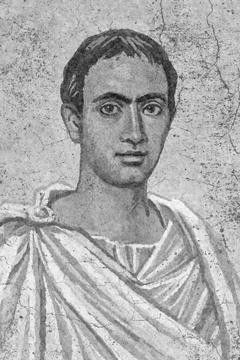Ovid: An Introduction
- Alexei Varah
- Jun 20
- 3 min read
On March 20, 43 BC, as the Roman Republic was nearing an end, Publius Ovidius Naso was born in the small town of Sulmo, situated in the Apennine Mountains 90 miles east of Rome. Known today as the infamous Ovid, this baby would grow into a prominent literary provocateur, earning him the title of the "last great poet of the Golden Age of Latin literature."

Unlike his counterparts Horace and Virgil, Ovid grew up in a well-off Roman family and was educated for a traditional Roman career: law and public service. He had access to an esteemed education studying rhetoric in Rome and philosophy in Athens, yet, though seemingly destined for politics, Ovid found an affinity for poetry. After briefly serving in a minor public post, he turned his attention fully to verse. By his early twenties, Ovid was already making a name for himself by publishing Heroides, a bold, subversive collection of letters written in the voices of mythological heroines addressing their absent lovers.
Much like Virgil, Ovid was inspired by Greek poets such as Callimachus as well as influential Roman poets like Catullus, using the elegiac couplet form to explore themes of love and desire. His early works, including Amores (16 BC) and Ars Amatoria (2 AD), reveal his predisposition for testing the boundaries of Roman social norms; Ovid did not merely write about love but instead offered Romans a controversial guide to their own romantic endevours.
But it was Ovid's crowning achievement, the Metamorphoses, that established him as a legend of Latin literature. This sweeping 15-book epic retold hundreds of Greco-Roman myths, all centered upon the theme of transformation. The lines between God, mortal, and nature were blurred in this ambitious mythological transcription. Alongside the Iliad and the Aeneid, the Metamorphoses stands as one of the most infamous literary monuments of Ancient Rome.
Yet just as Ovid reached the pinnacle of his fame, disaster struck. For reasons that remain mysterious, in 8 AD, Emperor Augustus exiled him to the remote Black Sea port city of Tomis (now Romania). When referring to his exile, Ovid reportedly cited carmen et error: "a poem and a mistake." While likely due to Ars Amatoria and his other works being deemed scandolous and antithetical to Augustan family values, the full story of Ovid's exile remains one of literary history's greatest unanswered questions.
However, exile did not mark the end of Ovid's poetic career. Instead, it prompted the publishing of Tristia, Ibis, and Epistulae ex Ponto between 8 AD and 16 AD, which illustrated his profound longing to return to back to Rome. Yet, despite his continued pleas for mercy, Ovid would remain exiled until he died in 17 AD.
The legacy of Ovid, however, did not die with him. His retelling of ancient myth would continue to influence medieval and Renaissance literature, especially Shakespeare, whose Romeo and Juliet directly harkens back to the Metamorphoses' tale of Pyramus and Thisbe. His exploration of love, passion, and transformation would shape centuries of poetry and art, influencing creatives from Chaucer to Botticelli. Ovid's literary style, moreover, would have its own legacy, with the twelfth century being named the Ovidian age due to the outpouring of poems written in Ovidian hexameter. Even today, Ovid's honest, witty, and lyrical voice continues to resonate, cementing his status as one of history's greatest poets.
Hopefully, this biography has expanded your understanding of Ovid's life and legacy. Please leave a comment below with any additional pieces of information you'd like to see added to this post, as well as poems by Ovid you'd like to see analyzed in the future!



Comments